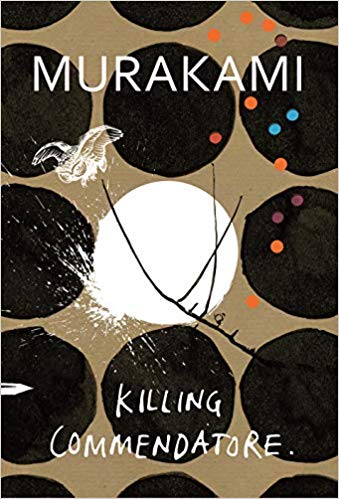Haruki Murakami is one of my favorite writers. Although I have all his other books (aside from one) in paperback, the size and scope of his latest novel was such that when I saw a copy in the Beyer bookstore in Bergen, Norway while visiting last summer, I had to buy the hardcover edition. Besides, the British edition’s cover looked considerably more attractive than the American edition. I’m not sure what the cashier thought when I handed over the massive Murakami book in English along with the Norwegian edition of a Jørn Lier Horst mystery novel. I guess as long as money also is handed over, I could as well have been buying anything.

My two favorite Murakami books are 1Q84 and The Wind-up Bird Chronicle. Both are hefty books, to the point where I bought the former in the edition with three volumes instead a fat book with a spine likely to break under the stress. Killing Commendatore is no different, being nearly 700 pages long. I was concerned the trip back across the Atlantic would damage the book, but aside from a dent in the front cover, which might have been there from the start, it made the trip and subsequent reading without too much of a beating. Besides, it not like it’s a first edition.
While waiting for the translation from the Japanese edition, I read some reviews of the novel, which was a foolish action. Reviewers (and I’ve been there), present interesting views of the books they cover. Their opinions are at a different level from “mere” readers. In this case, I wanted to approach the book as a reader, as a fan of Murakami’s style and method. I enjoy his longer books the best, as he has a way with words, with setting, pace. His writing style eases you into the book, sort of like slipping into a warm bath. I don’t read Murakami with the intent to race to the end, but rather savor every moment of the journey.
I tried to distance myself from the reviews as I read the book; not all of them were favorable. The main characters, a portrait painter betrayed by his wife, suffers a sort of breakdown. He decides to leave his life behind, sets out on an aimless journey across Japan. Eventually he settles into a situation where he house-sits for a friend, whose dead father’s house sits empty. The father, a (fictional) famous Japanese painter, looms over the narrative. By chance the protagonist is also pulled back into portrait painting, after trying to quit. He also slips into a strange sideways world, as is so often the case in Murakami’s novels. There’s also a great deal of sex, more so that in Murakami’s other novels.
While not on the same level (in my opinion) as 1Q84 or The Wind-up Bird Chronicle, this book comes close. Having caught up to all his books, I find it difficult that I now must wait until he completes his next one, and his translators complete their arduous task of turning it into English.